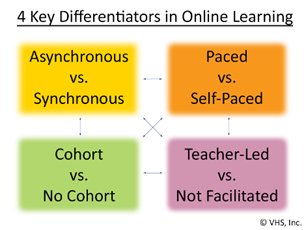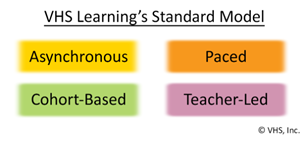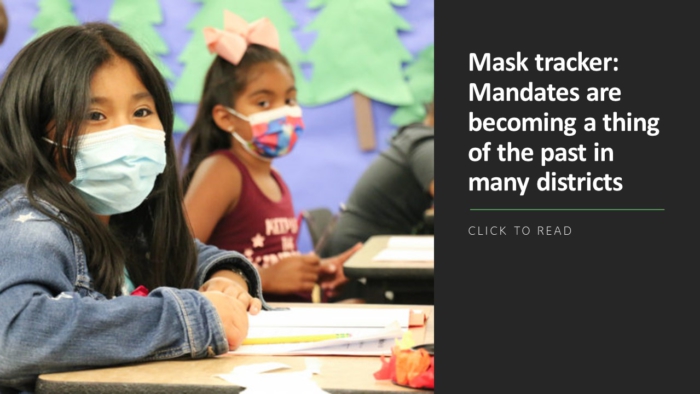
Who says you can’t build relationships and strong community using the asynchronous online delivery model? Here are some of the common misconceptions of online learning proven wrong.
The global pandemic forced schools around the globe to shut down their classrooms and teach their students virtually. And while online learning had long been considered a viable educational delivery method, when the pandemic emerged millions of students, teachers, and school administrators worked to keep their boats moving in rough, scary waters.
For many, the definition of “online learning” became synonymous with a synchronous, or live, model, with scheduled sessions using video conferencing tools like Zoom. The goal was to try and replicate the face-to-face approach using computer screens, digital devices, and other tech tools.
Is the cup half-full or half-empty?
From a “cup is half-full” perspective, it’s nothing short of miraculous that so many schools around the world were able to use technology to keep student learning going. From the opposite perspective, online learning during the pandemic has been a huge challenge for many—and in some instances, not terribly successful.
There’s another “half-empty” consequence, and it’s one that VHS Learning and like-minded educational organizations have felt with the force of a gut punch: the fact that standards-based online learning has gotten a bad name as a result of these recent events.
The fact is, there are many different ways to deliver learning online, and each comes with its own strengths and limitations. Trying to compare or lump together different delivery models is like comparing apples to oranges.
Asynchronous is not always self-paced
One common online learning misconception is that asynchronous online courses are synonymous with self-paced online courses. This inaccuracy is understandable. After all, virtually all self-paced online courses are asynchronous. The reverse, however, is not always true.
Not only can asynchronous online courses be paced, but they can also promote many of the same qualities of community building and relationships often found in live, cohort-based settings.
What are the different models?
Here are four key differentiators of online learning models:

- Asynchronous vs. synchronous: There are no live, scheduled classes in the fully asynchronous online classroom; any group work (i.e., discussions) happens over time and usually through written communication. Synchronous online learning means live, scheduled classes and/or tutoring through video conferencing tools like Zoom.
- Paced vs. self-paced: In a paced online classroom, students go through the scope and sequence following a specific schedule. Assignments must be completed by specified dates and there are penalties for late work. Typically, paced courses have a set of assignments due each week. In a self-paced online course, students proceed through the course materials and complete activities and assignments at their own individual pace and discretion.
- Cohort vs. no cohort: In a cohort-based online classroom, a specific group of students proceeds through the course together, with an emphasis on group work and community building. In a non-cohort-based online course, the students proceed through the curriculum themselves with an emphasis on individualized activities.
- Teacher-led vs. not facilitated: There is usually a manageable student-teacher ratio in a teacher-led online classroom, where the instructor works to foster a learning community. The teacher also provides customized feedback and communicates directly with students to help resolve issues. In an online classroom that isn’t facilitated, the onus is on the student to proceed through the curriculum and complete activities, and any student work is auto-graded.
Building relationships using the asynchronous model
Most of our online courses are delivered asynchronously and are paced experiences. In fact, keeping the student moving through the course curriculum in a paced manner is a critical aspect of our standard pedagogic approach, and strongly linked with two other key aspects of our model: that our courses are both cohort-based and teacher-led.

Years spent observing our courses in action have proven that you can successfully build both relationships and community within an asynchronous online course structure. Indeed, our model works best when we focus on activities and instructional strategies that emphasize both of those goals.
This is true regardless of the course discipline: STEM, humanities, life skills—it doesn’t matter. Student engagement and outcomes can be highly impacted by relationships, including teacher to student; student to student; and even teacher to parent.
Asynchronous, paced delivery models should foster deep relationships just as they would in a quality face-to-face classroom experience. From the curriculum development process to teacher training, course developers should devote considerable time and effort to making sure students feel part of a community of learners.
If you take nothing else away from this article, I hope at least you will never again look at online learning as “just one thing.” The truth is that not only are online delivery models as different from one another and nuanced as face-to-face models, but some asynchronous approaches can even create a deep sense of connection and community in ways that might surprise you.
John Englander is Program Officer for VHS Learning, a nonprofit provider of online instruction to schools worldwide.
More from DA



